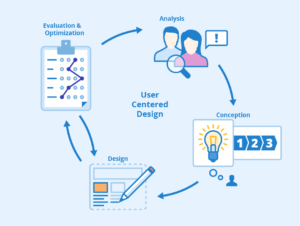The Youthful Demographic: Navigating the Future of a Country Dominated by its Youth
Introduction
A nation’s demographic composition plays a pivotal role in shaping its present and future. With a staggering 60% of its population comprised of youth, this country stands at a unique juncture. While the abundance of young people brings vitality and potential, it also poses challenges and necessitates strategic planning for sustainable growth. In this blog, we will explore the implications of having a youthful demographic, the factors contributing to it, and the steps required to harness this demographic dividend effectively.
Demographic Landscape
Youthful Advantage: A nation with a large youth population possesses a demographic dividend. This refers to a phase where the proportion of youth is significantly higher than the elderly population. This dividend presents opportunities for economic growth, innovation, and social transformation.
Challenges Ahead: While a youthful population has immense potential, it can also strain resources and services. Providing education, healthcare, employment, and adequate living conditions for such a significant proportion of young individuals demands comprehensive planning and effective policies.
Demographic Transition: Demographic shifts are inevitable. The high fertility rate and reduced mortality rate contribute to a youthful demographic. However, as healthcare and education improve, birth rates tend to decline, leading to a changing population pyramid.
Factors Shaping the Youth Dominance
Historical Trends: Historical fertility rates, mortality rates, and socio-economic conditions have contributed to the current demographic composition. Countries with past high fertility rates often experience a youth bulge.
Healthcare and Education: Improvements in healthcare and education have led to decreased child mortality rates and increased access to education, contributing to a larger youth population.
Cultural Norms: Cultural norms and traditions related to family size and women’s roles impact birth rates. Societal expectations influence family planning decisions.
Economic Factors: Economic conditions, employment opportunities, and income levels influence family planning choices. In countries with limited job prospects, families may opt for larger families as a form of social security.
Harnessing the Youth Demographic
Quality Education: Empowering youth through quality education is key to their engagement and contribution to society. Access to relevant, up-to-date education equips them with the skills necessary for employability and innovation.
Job Creation: The youth dividend can only be realized if there are adequate job opportunities. Governments and private sectors need to collaborate to create employment avenues that align with the aspirations and skills of the youth.
Entrepreneurship: Fostering an entrepreneurial ecosystem encourages youth to create their own opportunities. Training, mentorship, and access to funding can empower them to become job creators rather than job seekers.
Healthcare and Family Planning: Ensuring access to quality healthcare and family planning services contributes to more informed family planning decisions. This can help manage population growth while improving the overall well-being of families.
Political Engagement: Involving youth in political processes empowers them to shape policies that reflect their aspirations. Youth representation in governance promotes intergenerational equity.
Social Welfare Programs: Implementing targeted social welfare programs, such as support for young mothers, childcare services, and skill development initiatives, can alleviate the challenges faced by young families.
Conclusion
A country boasting a youth population of 60% holds the promise of a vibrant, dynamic future. However, tapping into this potential requires a strategic, comprehensive approach. By investing in education, job creation, healthcare, and social engagement, governments can ensure that the youth demographic becomes a driving force for progress, innovation, and sustainable development. As demographic shifts are inevitable, it’s crucial to seize the opportunity presented by a youthful population and channel its energy and enthusiasm toward building a prosperous and harmonious society for generations to come.
For More Related Articles Browse Our Website Blogster.pk
For social Connection You can also Visit and follow our Social media Platforms
Facebook , Instagram, Linkedin, Pinterest, Quora, Twitter, Youtube.
عنوان: دی یوتھ فل ڈیموگرافک: نوجوانوں کے زیر تسلط ملک کے مستقبل پر تشریف لے جانا
تعارف
کسی قوم کی آبادیاتی ساخت اس کے حال اور مستقبل کی تشکیل میں اہم کردار ادا کرتی ہے۔ حیرت انگیز طور پر اس کی 60% آبادی نوجوانوں پر مشتمل ہے، یہ ملک ایک منفرد موڑ پر کھڑا ہے۔ جہاں نوجوانوں کی کثرت زندگی اور صلاحیت لاتی ہے، وہیں یہ چیلنجز بھی پیش کرتا ہے اور پائیدار ترقی کے لیے اسٹریٹجک منصوبہ بندی کی ضرورت ہے۔ اس بلاگ میں، ہم نوجوان آبادی کے حامل ہونے کے مضمرات، اس میں کردار ادا کرنے والے عوامل، اور اس ڈیموگرافک ڈیویڈنڈ کو مؤثر طریقے سے استعمال کرنے کے لیے درکار اقدامات کا جائزہ لیں گے۔
ڈیموگرافک لینڈ سکیپ
جوانی کا فائدہ: نوجوانوں کی ایک بڑی آبادی والی قوم کو آبادیاتی منافع حاصل ہوتا ہے۔ یہ ایک ایسے مرحلے کی طرف اشارہ کرتا ہے جہاں نوجوانوں کا تناسب بزرگ آبادی کے مقابلے میں نمایاں طور پر زیادہ ہے۔ یہ منافع معاشی ترقی، اختراع اور سماجی تبدیلی کے مواقع پیش کرتا ہے۔
آگے کے چیلنجز: اگرچہ نوجوان آبادی میں بے پناہ صلاحیت ہے، لیکن یہ وسائل اور خدمات کو بھی دبا سکتی ہے۔ نوجوانوں کے اتنے بڑے تناسب کے لیے تعلیم، صحت کی دیکھ بھال، روزگار، اور مناسب حالات زندگی کی فراہمی جامع منصوبہ بندی اور موثر پالیسیوں کا تقاضا کرتی ہے۔
آبادیاتی تبدیلی: آبادیاتی تبدیلیاں ناگزیر ہیں۔ اعلی زرخیزی کی شرح اور شرح اموات میں کمی نوجوانوں کی آبادی میں حصہ ڈالتی ہے۔ تاہم، جیسے جیسے صحت کی دیکھ بھال اور تعلیم میں بہتری آتی ہے، شرح پیدائش میں کمی واقع ہوتی ہے، جس کی وجہ سے آبادی میں تبدیلی آتی ہے۔
نوجوانوں کے غلبہ کو تشکیل دینے والے عوامل
تاریخی رجحانات: تاریخی زرخیزی کی شرح، شرح اموات، اور سماجی و اقتصادی حالات نے موجودہ آبادیاتی ساخت میں اہم کردار ادا کیا ہے۔ ماضی میں اعلیٰ زرخیزی کی شرح والے ممالک اکثر نوجوانوں میں اضافہ کا تجربہ کرتے ہیں۔
صحت کی دیکھ بھال اور تعلیم: صحت کی دیکھ بھال اور تعلیم میں بہتری نے بچوں کی اموات کی شرح کو کم کیا ہے اور تعلیم تک رسائی میں اضافہ کیا ہے، جس سے نوجوانوں کی بڑی آبادی میں اضافہ ہوا ہے۔
ثقافتی اصول: خاندانی سائز اور خواتین کے کردار سے متعلق ثقافتی اصول اور روایات شرح پیدائش کو متاثر کرتی ہیں۔ سماجی توقعات خاندانی منصوبہ بندی کے فیصلوں کو متاثر کرتی ہیں۔
اقتصادی عوامل: معاشی حالات، روزگار کے مواقع، اور آمدنی کی سطح خاندانی منصوبہ بندی کے انتخاب پر اثر انداز ہوتے ہیں۔ محدود ملازمت کے امکانات والے ممالک میں، خاندان سماجی تحفظ کی ایک شکل کے طور پر بڑے خاندانوں کا انتخاب کر سکتے ہیں۔
یوتھ ڈیموگرافک کا استعمال
معیاری تعلیم: معیاری تعلیم کے ذریعے نوجوانوں کو بااختیار بنانا ان کی شمولیت اور معاشرے میں شراکت کی کلید ہے۔ متعلقہ، جدید ترین تعلیم تک رسائی انہیں روزگار اور اختراع کے لیے ضروری مہارتوں سے آراستہ کرتی ہے۔
ملازمت کی تخلیق: نوجوانوں کے منافع کو صرف اسی صورت میں حاصل کیا جا سکتا ہے جب ملازمت کے مناسب مواقع ہوں۔ حکومتوں اور نجی شعبوں کو روزگار کے مواقع پیدا کرنے کے لیے تعاون کرنے کی ضرورت ہے جو نوجوانوں کی خواہشات اور ہنر کے مطابق ہوں۔
انٹرپرینیورشپ: ایک کاروباری ماحولیاتی نظام کو فروغ دینا نوجوانوں کو اپنے مواقع پیدا کرنے کی ترغیب دیتا ہے۔ تربیت، رہنمائی، اور فنڈنگ تک رسائی انہیں ملازمت کے متلاشیوں کے بجائے ملازمت کے تخلیق کار بننے کے لیے بااختیار بنا سکتی ہے۔
صحت کی دیکھ بھال اور خاندانی منصوبہ بندی: معیاری صحت کی دیکھ بھال اور خاندانی منصوبہ بندی کی خدمات تک رسائی کو یقینی بنانا خاندانی منصوبہ بندی کے زیادہ باخبر فیصلوں میں حصہ ڈالتا ہے۔ یہ خاندانوں کی مجموعی فلاح و بہبود کو بہتر بناتے ہوئے آبادی میں اضافے کو منظم کرنے میں مدد کر سکتا ہے۔
سیاسی مشغولیت: نوجوانوں کو سیاسی عمل میں شامل کرنا انہیں ایسی پالیسیاں بنانے کا اختیار دیتا ہے جو ان کی خواہشات کی عکاسی کرتی ہوں۔ گورننس میں نوجوانوں کی نمائندگی بین الاقوامی مساوات کو فروغ دیتی ہے۔
سماجی بہبود کے پروگرام: ٹارگٹڈ سماجی بہبود کے پروگراموں کو نافذ کرنا، جیسے نوجوان ماؤں کے لیے سپورٹ، بچوں کی دیکھ بھال کی خدمات، اور مہارت کی ترقی کے اقدامات، نوجوان خاندانوں کو درپیش چیلنجوں کو کم کر سکتے ہیں۔
نتیجہ
60% نوجوانوں کی آبادی پر فخر کرنے والا ملک ایک متحرک، متحرک مستقبل کا وعدہ رکھتا ہے۔ تاہم، اس صلاحیت کو استعمال کرنے کے لیے ایک اسٹریٹجک، جامع نقطہ نظر کی ضرورت ہے۔ تعلیم، روزگار کی تخلیق، صحت کی دیکھ بھال، اور سماجی مشغولیت میں سرمایہ کاری کرکے، حکومتیں اس بات کو یقینی بنا سکتی ہیں کہ نوجوان آبادی ترقی، اختراع، اور پائیدار ترقی کے لیے ایک محرک بن جائے۔ چونکہ آبادیاتی تبدیلیاں ناگزیر ہیں، اس لیے نوجوان آبادی کی طرف سے پیش کردہ موقع سے فائدہ اٹھانا اور اپنی توانائی اور جوش و جذبے کو آنے والی نسلوں کے لیے ایک خوشحال اور ہم آہنگ معاشرے کی تعمیر کے لیے استعمال کرنا بہت ضروری ہے۔
مزید متعلقہ مضامین کے لیے ہماری ویب سائٹ Blogster.pk کو براؤز کریں۔
سماجی رابطے کے لیے آپ ہمارے سوشل میڈیا پلیٹ فارم پر بھی جا سکتے ہیں اور ان کی پیروی کر سکتے ہیں۔
Facebook , Instagram, Linkedin, Pinterest, Quora, Twitter, Youtube.







